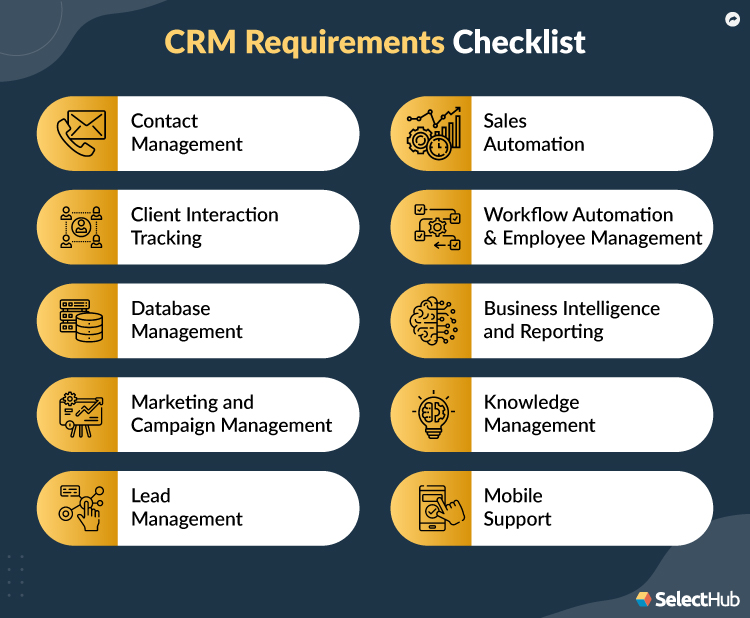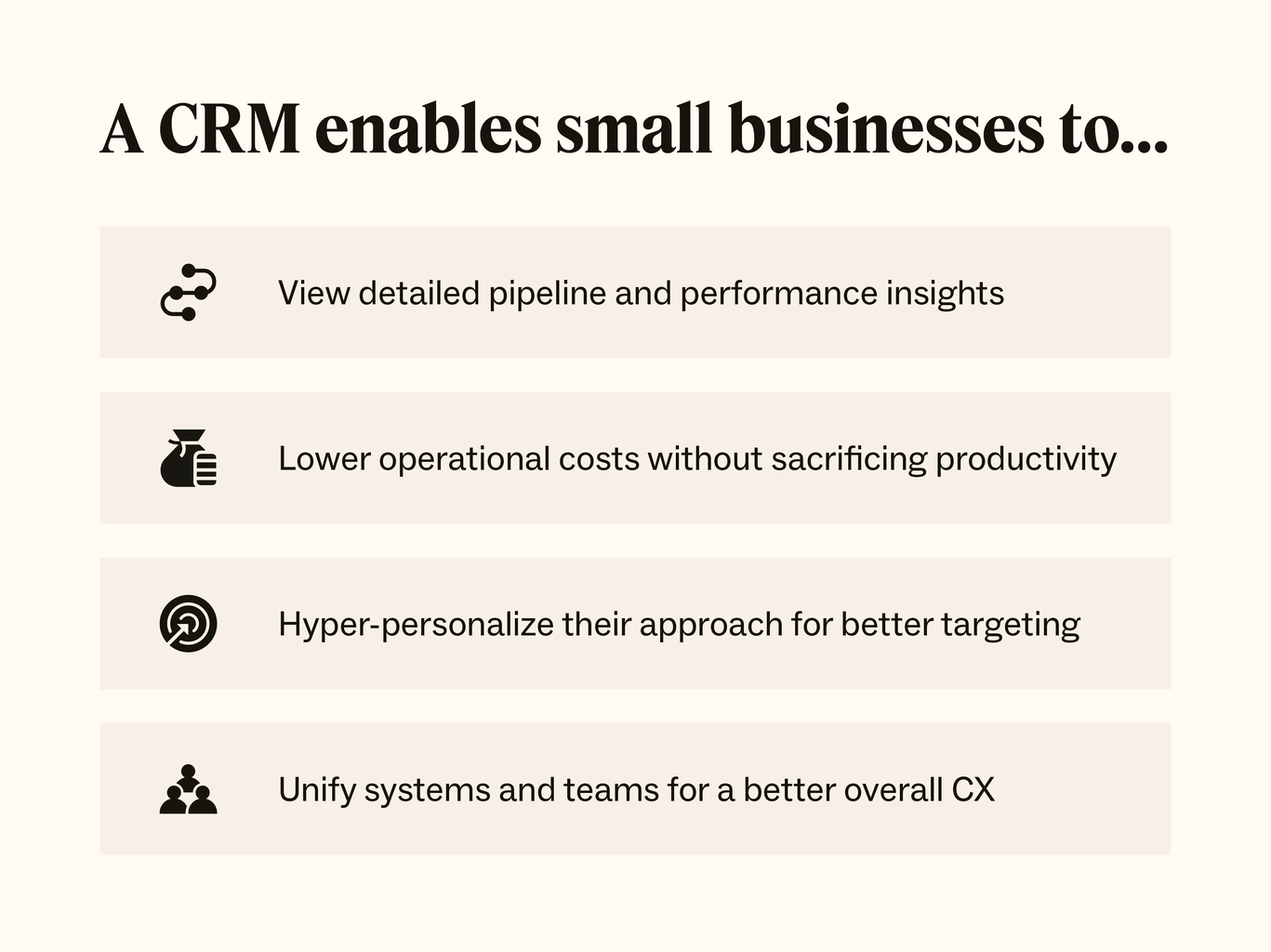
Small Business CRM Checklist: Your Ultimate Guide to Choosing and Implementing the Right System
Running a small business is a whirlwind. You’re juggling everything – from product development and marketing to sales and customer service. In the midst of it all, keeping track of your customer relationships can feel like an impossible task. That’s where a Customer Relationship Management (CRM) system comes in. Think of it as your central hub for all things customer-related. It helps you organize, streamline, and optimize your interactions, ultimately leading to happier customers and a more profitable business. But with so many CRM options out there, how do you choose the right one? And once you’ve chosen, how do you make sure it’s implemented effectively? This comprehensive checklist will guide you through every step of the process.
What is a CRM and Why Does Your Small Business Need One?
Before we dive into the checklist, let’s quickly recap what a CRM is and why it’s essential for small businesses. A CRM is a software solution designed to manage all your company’s relationships and interactions with current and potential customers. It centralizes customer data, allowing you to track interactions, manage leads, automate tasks, and personalize your communication.
Here’s why your small business desperately needs a CRM:
- Improved Customer Relationships: A CRM helps you understand your customers better by providing a 360-degree view of their interactions with your business.
- Increased Sales: By streamlining your sales process and providing sales teams with valuable insights, a CRM can significantly boost your sales figures.
- Enhanced Efficiency: Automate repetitive tasks, freeing up your team to focus on more strategic initiatives.
- Better Data Organization: Say goodbye to scattered spreadsheets and disorganized customer data. A CRM keeps everything in one place.
- Improved Communication: Ensure consistent and personalized communication across all customer touchpoints.
Phase 1: Needs Assessment and Planning – Laying the Foundation
Before you even start looking at CRM software, you need a solid plan. This phase is all about understanding your business needs and defining your goals. Skipping this step is like building a house without blueprints – you’re likely to run into problems down the road.
1. Define Your Business Goals and Objectives
What do you want to achieve with a CRM? Are you looking to increase sales, improve customer retention, streamline your marketing efforts, or all of the above? Clearly defined goals will guide your decision-making process and help you measure the success of your CRM implementation. Be specific. Instead of saying “increase sales,” aim for “increase sales by 15% within the next year.”
2. Identify Your Pain Points
What challenges are you currently facing in managing your customer relationships? Are you struggling with disorganized data, missed follow-ups, or inefficient communication? Pinpointing your pain points will help you identify the features and functionalities you need in a CRM.
3. Analyze Your Current Processes
How do you currently manage your customer interactions? Map out your existing sales, marketing, and customer service processes. This will help you identify areas where a CRM can provide the most value and where you can streamline your workflows. Documenting your existing processes is crucial for a smooth transition.
4. Determine Your Budget
CRM software can range in price from free to thousands of dollars per month. Determine a realistic budget that considers not only the software costs but also the costs of implementation, training, and ongoing maintenance. Remember to factor in the potential return on investment (ROI) when setting your budget.
5. Involve Key Stakeholders
Don’t make this decision in a vacuum. Involve key stakeholders from all departments who will be using the CRM, such as sales, marketing, and customer service. Their input is crucial for ensuring that the chosen CRM meets the needs of the entire organization.
Phase 2: CRM Software Selection – Choosing the Right Fit
Now comes the exciting part – choosing the right CRM software for your small business. With countless options available, this can feel overwhelming. But don’t worry, we’ll break it down into manageable steps.
1. Research CRM Vendors
Start by researching different CRM vendors. Look for vendors that specialize in small businesses and offer features that align with your specific needs. Read reviews, compare pricing, and explore their websites to get a feel for their offerings.
2. Evaluate Features and Functionality
Make a list of the essential features you need in a CRM. This might include contact management, lead management, sales automation, marketing automation, customer service, and reporting. Prioritize the features that are most important to your business and look for a CRM that offers them.
3. Consider Scalability
Choose a CRM that can grow with your business. As your company expands, your CRM needs will likely change. Ensure the CRM you choose can accommodate your future needs and scale to handle increasing data volumes and user numbers.
4. Assess Integration Capabilities
Does the CRM integrate with your existing software, such as your email marketing platform, accounting software, and website? Seamless integration will save you time and effort by eliminating the need to manually transfer data between systems.
5. Evaluate Ease of Use and User Experience
A CRM is only effective if your team actually uses it. Choose a system that is user-friendly and intuitive. Look for a clean interface, easy navigation, and helpful training resources. Consider offering a trial period to test the system before committing.
6. Check for Mobile Accessibility
In today’s fast-paced world, mobile accessibility is essential. Ensure the CRM offers a mobile app or a responsive design that allows your team to access customer data and manage their tasks on the go.
7. Consider Security and Data Privacy
Protecting your customer data is paramount. Choose a CRM that offers robust security features, such as data encryption, access controls, and regular backups. Ensure the vendor complies with relevant data privacy regulations, such as GDPR and CCPA.
8. Evaluate Customer Support and Training
Choose a CRM vendor that provides excellent customer support and training resources. Look for options such as online documentation, tutorials, webinars, and responsive customer service. This will help you and your team get the most out of the system.
9. Compare Pricing Plans
CRM pricing varies widely. Carefully compare the different pricing plans offered by each vendor. Consider the features included in each plan, the number of users supported, and any additional costs, such as implementation fees or training costs. Choose the plan that best aligns with your budget and your business needs.
10. Request Demos and Free Trials
Before making a final decision, request demos from your top CRM contenders. This will allow you to see the software in action and ask questions. Many vendors also offer free trials, allowing you to test the system and see if it’s the right fit for your business.
Phase 3: Implementation and Configuration – Making it Work
You’ve chosen your CRM. Now it’s time to implement it. This phase requires careful planning and execution to ensure a smooth transition and maximize the value of your investment.
1. Develop an Implementation Plan
Create a detailed implementation plan that outlines the steps involved, the timeline, and the responsibilities of each team member. This plan should include data migration, system configuration, user training, and testing.
2. Migrate Your Data
Transferring your existing customer data to the new CRM is a critical step. Clean and organize your data before migrating it to ensure accuracy and avoid duplicates. Most CRM systems offer data import tools, but you may need to manually map your data fields.
3. Configure the CRM
Customize the CRM to meet your specific business needs. This might include setting up user roles and permissions, configuring sales pipelines, creating custom fields, and integrating with other software.
4. Train Your Team
Provide comprehensive training to your team on how to use the CRM. Offer different training sessions for different user roles. Provide documentation, tutorials, and ongoing support to ensure everyone is comfortable using the system.
5. Test the System
Thoroughly test the CRM before going live. Verify that all features are working as expected and that data is being stored correctly. Address any issues or bugs before the system is fully implemented.
6. Go Live and Monitor
Once you’ve tested the system, it’s time to go live. Monitor the system closely in the initial stages. Gather feedback from your team and make adjustments as needed. Be prepared to troubleshoot any issues that arise.
Phase 4: Ongoing Management and Optimization – Getting the Most Out of Your CRM
Implementing a CRM is not a one-time event; it’s an ongoing process. To maximize the value of your CRM, you need to continuously manage and optimize it.
1. Monitor Usage and Adoption
Track how your team is using the CRM. Monitor key metrics, such as the number of contacts added, the number of deals created, and the time spent on each activity. Identify any users who are not actively using the system and provide them with additional training or support.
2. Analyze Data and Generate Reports
Use the CRM’s reporting features to analyze your customer data and track your progress towards your goals. Generate reports on sales performance, marketing campaign effectiveness, and customer service metrics. Use these insights to make data-driven decisions.
3. Regularly Clean and Update Data
Keep your CRM data clean and up-to-date. Regularly review your data for duplicates, outdated information, and inaccuracies. Implement processes for data cleansing and enrichment to ensure the quality of your data.
4. Provide Ongoing Training and Support
CRM systems are constantly evolving, so provide ongoing training and support to your team. Keep them informed of new features and updates. Encourage them to share their feedback and suggestions for improvement.
5. Automate Workflows
Leverage the CRM’s automation capabilities to streamline your workflows. Automate repetitive tasks, such as sending emails, creating tasks, and updating records. This will save your team time and improve efficiency.
6. Integrate with Other Tools
Integrate your CRM with other tools you use, such as your email marketing platform, accounting software, and website. This will create a seamless flow of information and improve your overall efficiency.
7. Regularly Review and Optimize
Periodically review your CRM setup and processes. Identify areas for improvement and make adjustments as needed. Stay up-to-date with the latest CRM trends and best practices to ensure you’re getting the most out of your system.
CRM Checklist Summary
To recap, here’s a condensed version of the checklist to help you stay on track:
- Needs Assessment and Planning:
- Define your business goals and objectives.
- Identify your pain points.
- Analyze your current processes.
- Determine your budget.
- Involve key stakeholders.
- CRM Software Selection:
- Research CRM vendors.
- Evaluate features and functionality.
- Consider scalability.
- Assess integration capabilities.
- Evaluate ease of use and user experience.
- Check for mobile accessibility.
- Consider security and data privacy.
- Evaluate customer support and training.
- Compare pricing plans.
- Request demos and free trials.
- Implementation and Configuration:
- Develop an implementation plan.
- Migrate your data.
- Configure the CRM.
- Train your team.
- Test the system.
- Go live and monitor.
- Ongoing Management and Optimization:
- Monitor usage and adoption.
- Analyze data and generate reports.
- Regularly clean and update data.
- Provide ongoing training and support.
- Automate workflows.
- Integrate with other tools.
- Regularly review and optimize.
Common CRM Mistakes to Avoid
Even with a thorough checklist, it’s easy to make mistakes. Here are a few common pitfalls to avoid:
- Choosing the wrong CRM: This is often due to a lack of proper needs assessment or not fully understanding your business needs.
- Failing to involve stakeholders: This can lead to lack of buy-in and low adoption rates.
- Insufficient training: Without proper training, your team won’t use the CRM effectively.
- Poor data migration: Inaccurate or incomplete data can undermine the value of your CRM.
- Neglecting ongoing maintenance: A CRM requires ongoing effort to keep it running smoothly.
Conclusion: CRM – Your Small Business’s Secret Weapon
Implementing a CRM is a significant investment for any small business, but the benefits are undeniable. By following this checklist, you can choose the right CRM, implement it effectively, and optimize it for maximum impact. A well-implemented CRM will empower your team to build stronger customer relationships, increase sales, and achieve sustainable growth. Embrace the power of CRM, and watch your small business thrive. The journey might seem daunting at first, but the rewards – happier customers, a more efficient team, and a more profitable business – are well worth the effort. Take the first step today, and start building a brighter future for your small business.


